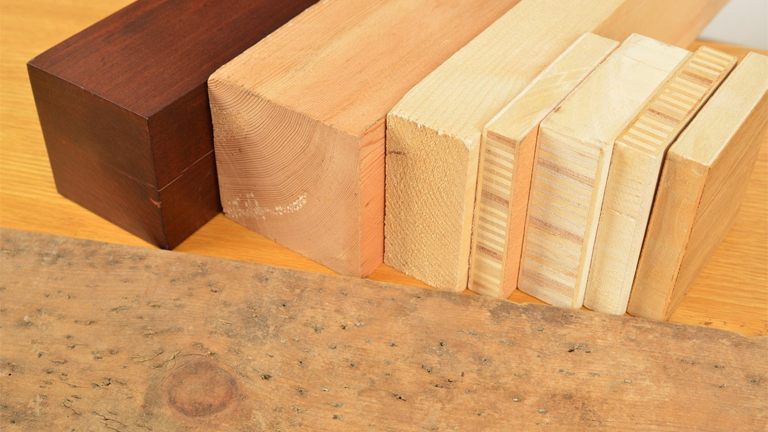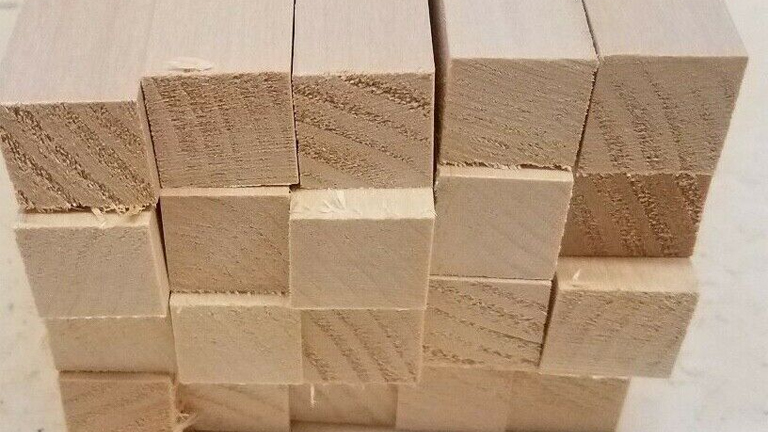Understanding the Significance of 4/4 in Lumber
- April 20, 2023
- 1 comment
In the world of woodworking and construction, lumber dimensions play a critical role in determining the material’s application and usability. One of the most common measurements you’ll encounter is “4/4,” pronounced “four-quarter,” which refers to the thickness of the lumber.

This seemingly simple number holds significant importance in how lumber is graded, sold, and ultimately used. In this article, “Understanding the Significance of 4/4 in Lumber,” we will explore what this measurement means, how it impacts your choices as a consumer or builder, and why it is a crucial factor for anyone involved in woodworking or construction projects.
What does 4/4, 5/4, 6/4, 8/4, 10/4, 12/4 mean?
In woodworking, the fractions like 4/4, 5/4, 6/4, 8/4, 10/4, and 12/4 represent the thickness of lumber in quarters of an inch. Specifically:
- 4/4 means the wood is approximately 1 inch thick.
- 5/4 indicates a thickness of about 1.25 inches.
- 6/4 is approximately 1.5 inches thick.
- 8/4 refers to wood that is about 2 inches thick.
- 10/4 is about 2.5 inches thick.
- 12/4 represents a thickness of approximately 3 inches.
These measurements are nominal, meaning they refer to the thickness of the wood before it is planed and finished, which can result in the actual thickness being slightly less than the nominal value. This system is commonly used to categorize and sell various types of rough lumber.
What’s the Reason Behind Using These Unusual Fractions?
While standard sizes like 1×6 or 2×8 are common in softwood lumberyards for materials such as fir, pine, and cedar, the hardwood industry follows a different approach. This is because hardwoods like red oak, cherry, and maple are primarily used for custom or made-to-fit products such as furniture and cabinetry, where uniform sizes in raw materials are unnecessary and more problematic. For instance, since kitchen tables do not have a standard size, sawmills cut hardwood logs to obtain the best yield, resulting in boards with varying widths instead of uniform ones. Sawmills avoid cutting logs to specific sizes or uniform widths as that would produce more waste and require more labor, leading to increased board costs.
On the other hand, softwoods are sold in “standard” sizes like 1×6 and 2×8, as they are cut for particular applications that require those sizes. In building construction, standard and uniform sizes are typically utilized from one building to another, such as door jambs and wall studs.
Thus, the hardwood industry’s standard for indicating lumber size starts with its thickness, expressed as a fraction: 4/4, 5/4, 6/4, 8/4, and so on. This system of naming lumber thickness by quarters was established by the National Hardwood Lumber Association, an organization founded in 1898 to develop a uniform system of grading rules for the inspection and measurement of hardwood lumber.
Now, Let’s talk about the Most Prevalent fraction, Which is 4/4.
When speaking, I usually refer to 4/4 as ‘four quarters,’ which stands for four quarters of an inch. If you’re good with numbers, you might have already figured out that 4/4 roughly equals one inch in thickness. Similarly, 5/4 means around 1-1/4″ thick, 6/4 means approximately 1-1/2″ thick, how thick is 8/4 lumber roughly 2″ thick, and 12/4 means about 3″ thick. However, to determine the actual measured thickness of the lumber, you need to look for another identifier, such as S2S or RGH. S2S indicates that the lumber has been planed smooth and flat on two sides, while RGH means that it’s still rough sawn and inconsistent. Lumber usually starts as rough sawn, but it needs to be planed smooth and flat before sizing it for the project.

S2S lumber was once rough but has now been planned smooth and flat, which removes some of its thickness. This process answers the question of why 4/4 lumber isn’t exactly one inch thick. The actual measured thickness of S2S 4/4 lumber is 13/16″, which is the standard acceptable thickness of surfaced 4/4 lumber according to NHLA rules.
A lumber dealer like Woodworkers Source faces a dilemma when it comes to rough lumber. Should they surface it smooth and clean, or sell it rough? Both options have their advantages, but stocking both is not practical.
Rough Vs. Surfaced

Pros of Rough Sawn Lumber (RGH)
- It’s generally less expensive than surfaced lumber because it hasn’t undergone additional processing.
- Offers more material thickness, which can be advantageous if further customization or larger dimensions are needed.
Pros of Surfaced Lumber (S2S)
- More suitable for hobbyists or woodworkers without industrial equipment, as it’s already planed to a uniform thickness.
- The surfacing process reveals the wood’s grain, figure, and color, making it easier to select pieces for specific projects.
- It’s lighter and cheaper to transport compared to rough sawn lumber.
Cons of Rough Sawn Lumber (RGH)
- The true grain, figure, and color of the wood are harder to discern due to the rough exterior.
- It often needs additional planing and flattening to correct distortions from drying, adding to the labor and time before use.
- Rough sawn lumber is heavier and more costly to ship per board foot due to its increased volume and weight.
Cons of Surfaced Lumber (S2S)
- The surfacing process reduces the initial thickness, which might limit its use in projects requiring thicker material.
- Although it saves on preparation time, the cost of surfacing is factored into the price.
- There’s less leeway to manage issues like cupping and warping since the wood is already thinned down.
The weight of rough versus surfaced lumber is not always an obvious difference, and while many people assume rough lumber is cheaper due to not having the added cost of surfacing, this is not the whole story. The weight of the lumber also plays a significant role in transportation costs for truckloads or container loads from suppliers.
For instance, a flatbed truck can carry up to 45,000 lbs, and the cost of moving that load remains constant, regardless of whether the lumber is rough or surfaced. However, the amount of lumber that will fit on the truck varies, with roughly 11,000 board feet of rough lumber and 14,000 board feet of surfaced lumber. Therefore, it is more practical to pay the slight fee for surfacing (which is around $0.10 per board foot) to the wholesaler to fit more lumber on the truck or container.
FAQs
- What does 4/4 mean in lumber terms?
“4/4” refers to the nominal thickness of lumber before it’s surfaced. It’s pronounced “four-quarter” and typically equates to a rough thickness of 1 inch, but actual dimensions may vary after planing and finishing. - Why is lumber measured in quarters?
Lumber is measured in quarters to provide a standardized method of referring to its thickness before it is planed. This system simplifies communication between buyers, sellers, and woodworkers, ensuring everyone understands the stock size being referenced. - How does the 4/4 measurement impact the cost of lumber?
The thickness of lumber, like 4/4, directly influences its price. Thicker dimensions often mean more wood volume, which can increase the cost. However, thicker lumber can also yield more stability and potential for resurfacing, which adds value. - Can 4/4 lumber vary in actual thickness?
Yes, while 4/4 lumber nominally starts as 1 inch thick, the actual thickness can be less due to the planing and finishing processes. It’s important for buyers to check whether the thickness is quoted in rough (before surfacing) or surfaced (finished) state. - What projects are best suited for 4/4 lumber?
4/4 lumber is extremely versatile and commonly used for a variety of projects, including furniture making, cabinetry, and other fine woodworking projects where the standard thickness is beneficial for structural and aesthetic purposes. - How do I choose the best 4/4 lumber for my project?
When selecting 4/4 lumber, consider the wood species, grain pattern, and any potential defects. Also, think about the specific requirements of your project, such as strength, appearance, and durability. - Is there a way to ensure I’m getting true 4/4 thickness?
To ensure you’re getting the full thickness you need, purchase lumber from reputable suppliers and consider buying rough-sawn lumber that you can then plane to your precise specifications.
I hope you found this guide on the significance of the 4/4 measurement in lumber useful! If you have any insights, personal experiences, or tips about working with lumber, please share them in the comments below. Your feedback can help enrich our discussion and assist fellow readers. Let’s keep the conversation going!














Good description
JOE THOMAS
April 21, 2023 11:39 pm